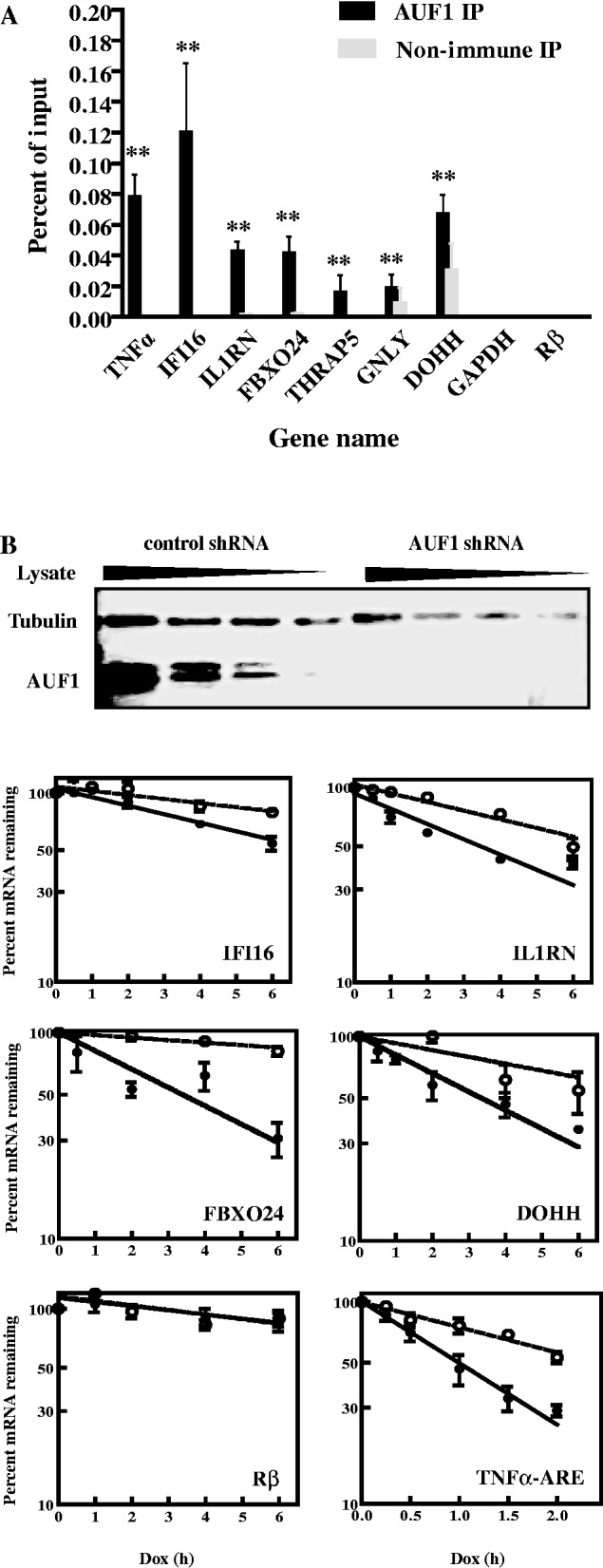Figure 3.

Analyses of AUF1 binding to and degradation of 3′-UTR reporter transcripts in HeLa/Tet-Off cells. (A) Association of AUF1 with 3′-UTR reporter transcripts in cells. A rabbit β-globin (Rβ) reporter plasmid containing the 3′-UTR from each indicated gene was transfected into HeLa/Tet-Off cells. After 2 days, cell lysates were immunoprecipitated with pre-immune serum or AUF1 anti-serum. Abundance of each indicated reporter mRNA in precipitates was determined by qRT–PCR and plotted as a percent of the input mRNA level. The means ± SD from three independent experiments are shown. **P < 0.01 versus Rβ mRNA (lacking any heterologous 3′-UTR insert). (B) Effects of AUF1 knockdown on degradation of Rβ-3′-UTR reporter mRNAs. HeLa/Tet-Off cells stably expressing control or AUF1-directed shRNA were prepared by transfection of plasmids and drug selection. Upper panel: western blot analysis of AUF1 knockdown. A 2-fold dilution series of lysate from cells expressing control shRNA was used to permit estimations of AUF1 knockdown efficiency. Tubulin served as a loading control. Lower panel: the Rβ-3′-UTR reporter genes were co-transfected with plasmid pEGFP-C2 into HeLa/Tet-Off cells expressing control (solid circles, solid lines) or AUF1 shRNAs (open circles, dashed lines). After 48 h, doxycycline was added to inhibit transcription of reporter genes. Levels of reporter mRNAs were normalized to that of EGFP mRNA and plotted as the percent reporter mRNA remaining as a function of time following doxycycline treatment. Each time point represents mean ± SD from n ≥ 3 independent experiments. Non-linear regression analyses yielded first-order decay constants (k) and associated mRNA half-lives. Representative graphs are shown, and all data are tabulated in Table 1. Dox, doxycycline.
